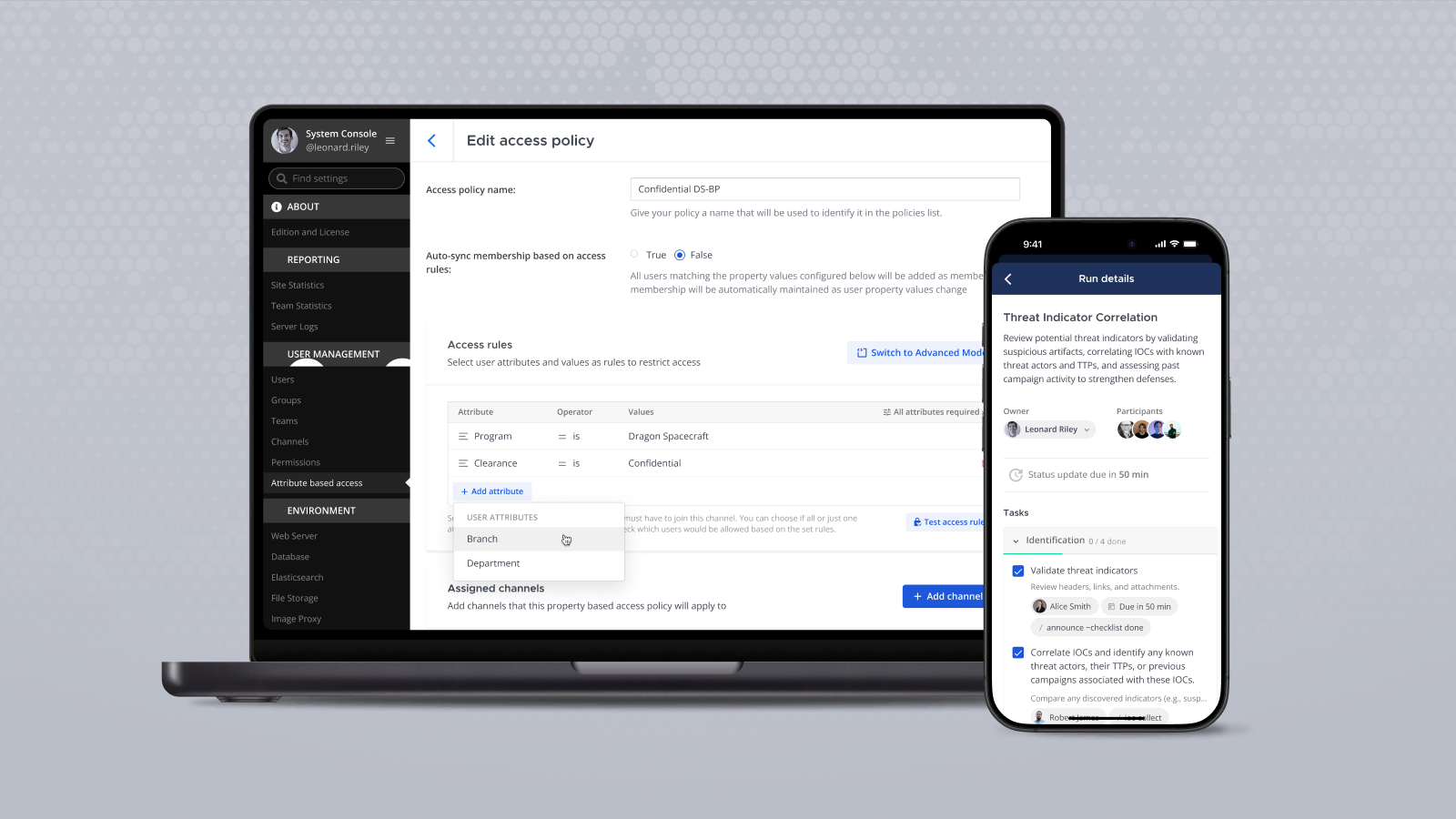
Centaurs, cyborgs & clones: 3 ways organizations are using artificial intelligence
The way we collaborate is going through a massive transformation.
Already, there are many ways teams can use artificial intelligence to work together more effectively; as we move further into the future, it seems all but inevitable that the technology will have an even more profound impact on collaboration.
While the emergence of AI-powered collaboration capabilities is no doubt exciting, organizations need to figure out how to balance innovative functionality with data sovereignty and security.
To help enterprise organizations understand how to deploy artificial intelligence safely and effectively, Mattermost Developer Advocate Andrew Zigler hosted a webinar entitled The Collaboration Landscape of Tomorrow: How AI is Transforming Mission-Critical Work that featured:
- Ruslan Shlain, GM and Director of professional services at Herzum,
- Alec Leeseberg, president at Velocity Explorations; and
- Taylor Ralston, information systems architect at Ampac Fine Chemicals.
Keep reading for some key takeaways from the session, along with a link to the full webinar, which you can watch on-demand at any time.
Artificial intelligence: Centaurs & cyborgs
Zigler kicked off the conversation by sharing two analogies from a Harvard Business School paper, Navigating the Jagged Technological Frontier: Field Experimental Evidence of the Effects of AI on Knowledge Worker Productivity and Quality, that describe different ways teams are using AI.
As AI continues to evolve, the authors of the paper see the emergence of a “jagged technological frontier” where the technology is able to take care of certain tasks easily while not being able to handle tasks that have a seemingly similar level of difficulty. As a result, practitioners will need to toggle between two approaches to AI, both of which have proven to be successful:
- A centaur approach, where you delegate repetitive tasks to AI while using your brain to apply human-centric thinking, and
- A cyborg approach, where you’re working very closely together with the AI and are essentially collaborating with it as one cohesive being.
Those analogies made a lot of sense to Ralston.
“There are times when you need to have it crunch a lot of numbers or just really dig deep into analysis,” Ralston said of instances where he’s used the centaur approach. “But you as a human are the one who’s performing your job. It’s not replacing you and your human brain, but it’s essentially helping you to arrive at your conclusions more quickly.”
Ralston has also used the cyborg approach to refine his thoughts.
“Sometimes I don’t know how to ask a question or I don’t know how to start investigating an important subject,” Ralston continued. “So the cyborg approach helps you get to a place where you can take it to the next level.”
But wait: AI is not a panacea
While AI can certainly help you work more productively, the technology isn’t sophisticated to the point it no longer makes mistakes.
“We’re all aware of AI hallucinations and the things that it comes up with, and you still need to do the validation,” Shlain said. “You still need to provide that feedback.”
Because of this, Shlain thinks AI, in its current state, is best for tasks adjacent to brainstorming and ideation — not the prime time.
“AI can give you that sounding board on what you’re trying to do and test what you’re trying to accomplish,” he explained.
Ralston agreed with this sentiment.
“If you’re working in a regulated industry like myself, you can’t just rely on the AI to know all the rules,” Ralston explained. “We have to be smart enough to really be able to spot things that are wrong.”
A digital twin of yourself
A digital twin refers to a virtual representation of a physical object, system, or process that’s used to simulate, analyze, and optimize its real-world counterpart. Digital twins — commonly found in the manufacturing, industrial, and energy sectors — are used to improve design, monitor performance, better predict outcomes, and enhance decision-making by providing insights into the way the physical entity operates and potential issues.
Building off this idea, Leeseberg introduced another analogy a colleague shared with him: AI as a digital twin of yourself. As technical teams use AI more and more, models can learn from real humans and begin to mimic their behavior.
“In this scenario, a digital twin is actually like a digital version of yourself that thinks like you, that talks like you, and can start to do all and automate all of the things and processes that you would be stuck doing if you didn’t have this digital twin to do that,” Leeseberg explained.
In Zigler’s eyes, this digital twin use case is a great addition to the analogies he used to kick off the conversation.
“It’s almost like there’s a third part of the analogy — you have the cyborgs, and then you have the clones, right?” he said.
Learn more about safely deploying AI at your organization
To learn more about how some of today’s sophisticated organizations are using AI — and what they’re doing to make sure their sensitive data stays protected — watch the webinar in full.
Have you tried Mattermost Copilot yet? Check out this interactive demo to learn more about how your team can deploy AI directly in your Mattermost environment while maintaining 100% control of data.




